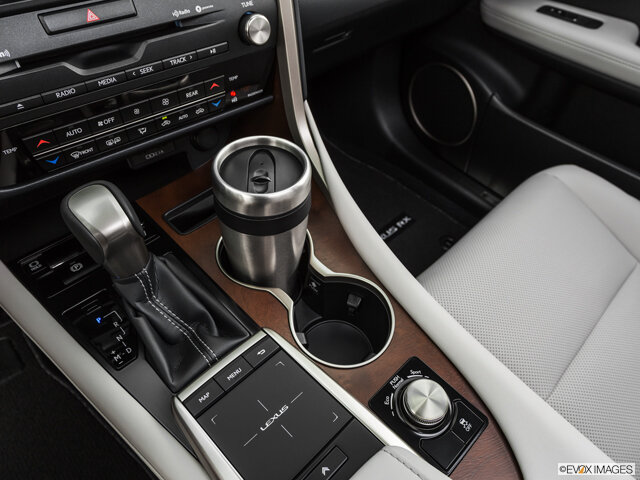Businesses collect data related to their target audiences and what type of products might interest them. This data isn’t something that’s necessarily captured online, although some information could be related to online data.
Previous purchases and online inquiries could allow car dealerships to better understand their customers. In addition, sales trends and other industry data also could drive dealership inventory. Buying trends coupled with individual customer preferences could help dealerships accrue the vehicles their buyers demand. Here’s how data moves inventory and how dealerships can leverage this information.
What Data is Important to Moving Inventory?
Dealerships and many other businesses need to research and understand buying trends and the demands of their individualized markets so they can offer the inventory and products that will sell. Car dealerships associated with a particular brand will offer all the models related to the brand’s lineup. In addition, the dealership also could offer pre-owned inventory.
Certain car models move quickly. These vehicles are highly desired by buyers and don’t sit on the lot long. Each area of the country, though, could have unique buying preferences. This sales data is important for dealerships to research so that they can accrue the best inventory for their customers.
Uncovering the buying data doesn’t only require having a finger on the pulse of the industry, but dealerships also need to easily analyze their own customer data. Ideally, dealerships should be able to review past sales to uncover trends related to popular models as well as cars that failed to sell quickly.
Previous sales data and industry data also can allow the dealership to pinpoint which cars are the best purchases related to trade-ins. For example, if a customer offers a 2019 Toyota Corolla, dealerships might already know how that trade-in will sell.

Online Data Is Important, Too
Dealerships might advertise online via social media platforms like Facebook. Online advertising enables businesses to zero in on a particular audience and geographic area. A dealership might focus a particular online ad related to pickup trucks to a particular age group who live in a specific region.
Online ads also let dealerships showcase numerous models via a carousel ad design. Carousel ads let consumers scroll through multiple products and click on the product (or vehicle) that interests them. Each unique section of the ad can link to a different website page; carousel and other online ads also could link to a page that lets consumers enter their information for the sales team.
These ads can make it easy for dealerships to communicate with customers. When an individual is shopping for a particular car, they might complete a form that is sent directly to the sales team. This allows the sales team to have access to the consumer’s contact information and the cars that interest them.
Online forms that allow the customer to detail their shopping needs and requests can simplify the job of the sales team at the dealership. They now know what car the buyer wants (maybe even the color or other details) and they can contact the customer to work with them to find their ideal vehicle.
Previous Customer Sales Data
The dealership might offer customers the option to receive communications related to service appointments, promotions or other information. However, the customer must control these preferences. This means that dealerships need to let customers opt into receiving communications and customers also should choose which communications they receive.
A customer’s sales data is important for numerous reasons. Customers could be loyal to a particular car brand or they could prefer a particular body style. If the sales team understands that the buyer has a history of only buying larger sedans, this could allow the dealership to better tailor communiqués to the buying needs of that customer
Some customers do not want text messages. Maybe they prefer email. Some might prefer standard mail. All businesses should abide by laws in their state as well as federal laws that govern any type of digital communications.

Will Data Explain Why Inventory is Stalled?
Some cars are difficult to move off the lot. A dealership might have acquired an older model car that just won’t budge; customers just don’t seem to be interested.
Will reviewing sales data or industry data pinpoint why certain cars won’t move? Unfortunately, some cars just might not resonate with area buyers. Maybe the vehicle has too many miles, perhaps the condition is not great.
Dealerships might focus on what type of buyer might need a particular vehicle. Perhaps the vehicle is featured in an online ad. Maybe the dealership slashes the price.
When demand is high, all cars might be easier to sell. As demand cools, car dealerships might find that cars are starting to take longer to sell.
Aggregate the Data
As Ward’s Auto noted, data can become confusing and overwhelming. This is why dealerships need to aggregate their data into reports that can be deciphered easily and quickly. Ward’s Auto recommends creating a system that allows the dealership to automatically generate reports related to social media data, CRM data and information from Google Analytics, too.
The sales team should be able to review data without feeling overwhelmed or buried in paper and numbers. Data needs to be an asset not a hindrance to productivity.
The dealership might create spreadsheets or reports that summarize the top-selling vehicles of the year (for the dealership) as well as what vehicles aren’t moving. In addition, generated reports also could summarize online ad data and analytics.
Data Provides Insight to Website Success, Too
Dealerships also can analyze data to better understand if marketing activities are successful. Perhaps the dealership enhanced its website to include augmented reality resources to improve the user experience. Maybe the dealership started a blog to improve SEO.
These marketing activities can be measured to understand success. Are customers interacting with augmented reality tools? The dealership could focus on how it promoted the offering. Maybe customers didn’t know they could explore models in augmented reality or using 3D imagery.
Data and analytics are important to help boost sales and to help the dealership understand how to meet the needs and demands of customers. In addition, measuring the analytics of the dealership’s website helps uncover what is working and what is not resonating.

Data Can Be Direct
One final way that dealerships can gather data about customer preferences and needs is by direct contact. This doesn’t mean emailing all customers or potential customers–again, any online or digital outreach needs to abide by all laws.
Instead, dealerships can create online surveys available on the website or on social media accounts to actively understand the needs and preferences of buyers. Surveys could focus on customer satisfaction, inventory or anything the dealership feels it needs to aggregate.
There are many ways for dealerships and all businesses to learn what their customers want related to products and services. Dealerships can gather information from analytics related to online ads, from past sales trends, industry trends or even from the dealership’s website data. In addition, dealerships also can directly provide customers with surveys that enable their preferences to be known. Social media sites can help dealerships position these surveys to ensure that all customers or potential customers can voice their opinions.

